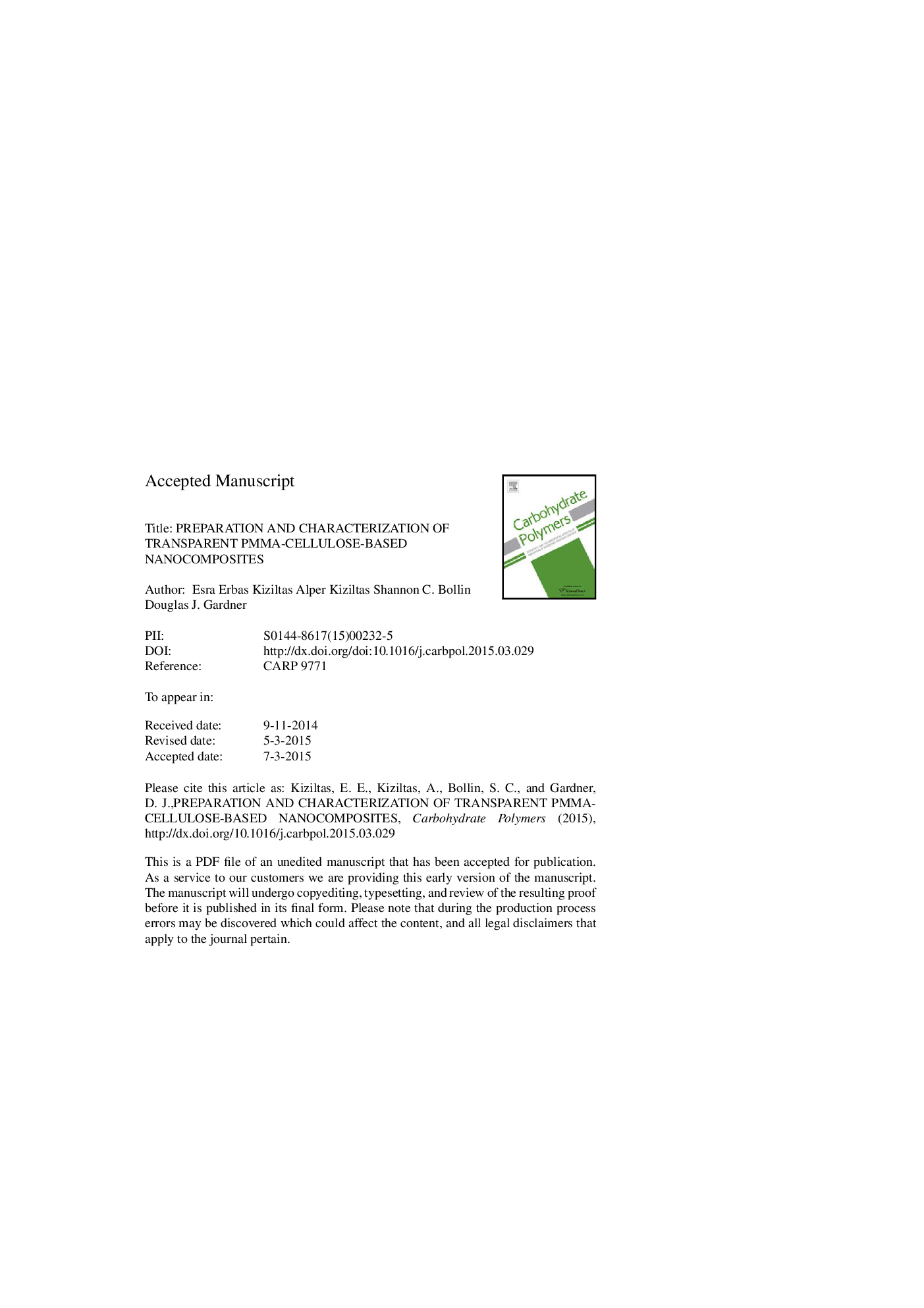| Article ID | Journal | Published Year | Pages | File Type |
|---|---|---|---|---|
| 7788550 | Carbohydrate Polymers | 2015 | 23 Pages |
Abstract
Nanocomposites of polymethylmethacrylate (PMMA) and cellulose were made by a solution casting method using acetone as the solvent. The nanofiber networks were prepared using three different types of cellulose nanofibers: (i) nanofibrillated cellulose (NFC), (ii) cellulose nanocrystals (CNC) and (iii) bacterial cellulose from nata de coca (NDC). The loading of cellulose nanofibrils in the PMMA varied between 0.25 and 0.5Â wt%. The mechanical properties of the composites were evaluated using a dynamic mechanical thermal analyzer (DMTA). The flexural modulus of the nanocomposites reinforced with NDC at the 0.5Â wt% loading level increased 23% compared to that of pure PMMA. The NFC composite also exhibited a slightly increased flexural strength around 60Â MPa while PMMA had a flexural strength of 57Â MPa. The addition of NDC increased the storage modulus (11%) compared to neat PMMA at room temperature while the storage modulus of PPMA/CNC nanocomposite containing 0.25 and 0.5Â wt% cellulose increased about 46% and 260% to that of the pure PMMA at the glass transition temperature, respectively. Thermogravimetric analysis (TGA) indicated that there was no significant change in thermal stability of the composites. The UV-vis transmittance of the CNF nanocomposites decreased by 9% and 27% with the addition of 0.25Â wt% CNC and NDC, respectively. This work is intended to spur research and development activity for application of CNF reinforced PMMA nanocomposites in applications such as: packaging, flexible screens, optically transparent films and light-weight transparent materials for ballistic protection.
Related Topics
Physical Sciences and Engineering
Chemistry
Organic Chemistry
Authors
Esra Erbas Kiziltas, Alper Kiziltas, Shannon C. Bollin, Douglas J. Gardner,
